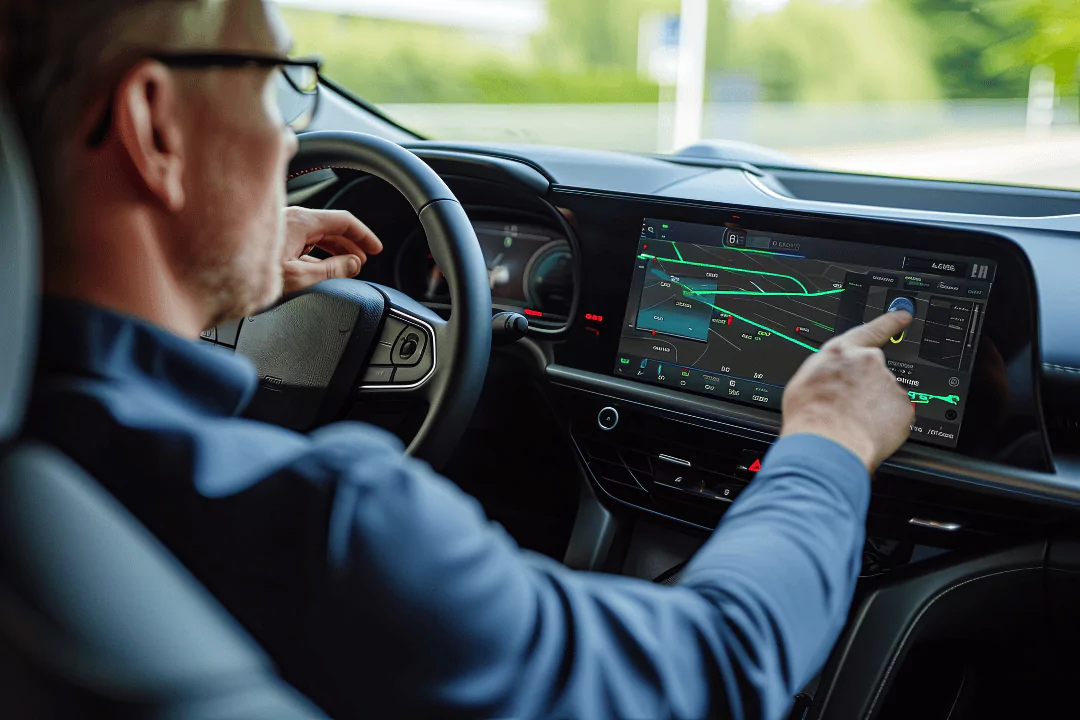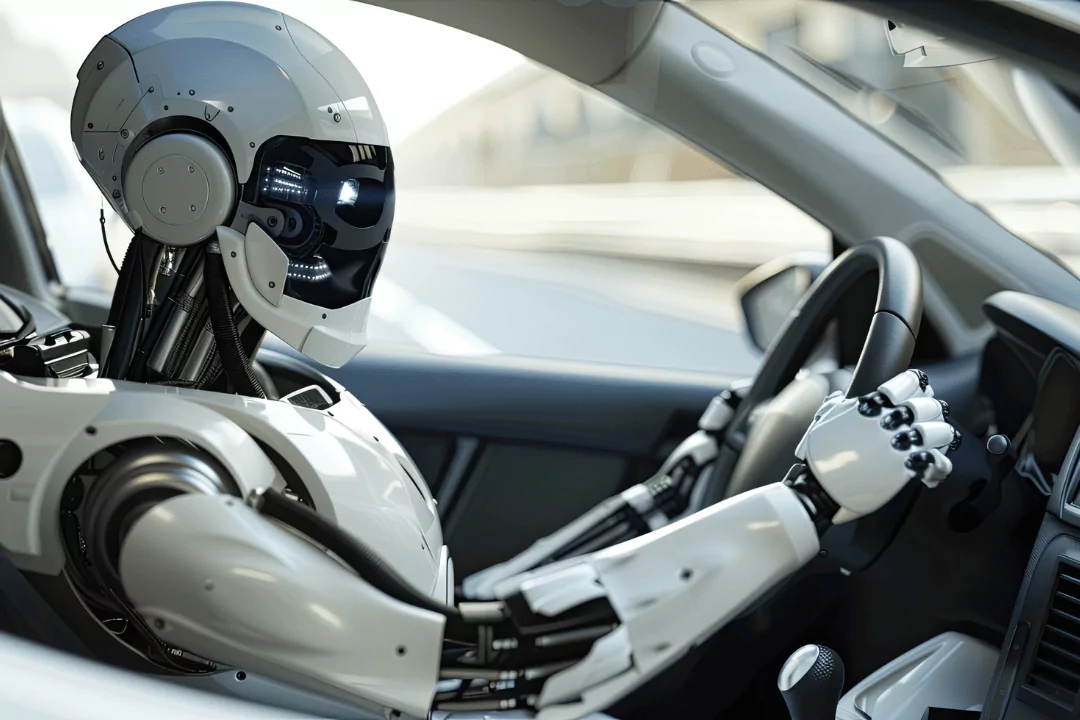- Combining Vehicle Health Management (VHM) with in-car infotainment systems delivers real-time diagnostics and personalized entertainment, enhancing vehicle reliability and user experience.
- A pilot project demonstrated the success of this integration, improving vehicle performance, enriching customer engagement, and providing critical data for further refinement.
- The rise of non-traditional players in the automotive space brings new challenges, particularly around data privacy and ethical considerations in managing and leveraging user data.
The future of the automotive industry lies in its ability to integrate cutting-edge technologies like AI to enhance both vehicle health management and in-car entertainment systems. As customer expectations evolve, the focus shifts towards making these systems more interactive, personalised, and proactive.
The Current State of Vehicle Health Management
Vehicle health management systems today are largely reactive, with most interventions occurring post-failure. In many cases, vehicle owners only become aware of an issue when a warning light illuminates on the dashboard, offering little information about the nature or severity of the problem. This reactive approach leads to emergency-based repair or maintenance, increased downtime, and higher maintenance costs.
Proactive vehicle health management is more prevalent in specific industries, such as construction equipment, where the health of a fleet is critical to business operations. For example, Caterpillar’s leasing model ensures that their fleet remains in optimal condition through proactive maintenance. However, such advanced foresight is not yet prevalent in the consumer automotive market.
The Future of Interactive Vehicle Health Monitoring
The future of vehicle health monitoring lies in making systems more interactive and user-friendly. This involves leveraging data to provide real-time insights into the vehicle’s condition, allowing both drivers and service technicians to make informed decisions. Diagnostic systems will not only alert drivers to potential issues but also offer detailed explanations and actionable advice. This could range from simple maintenance reminders to advanced warnings about potential failures based on predictive analytics.

For instance, if a vehicle detects that the fuel filter is becoming clogged, it could inform the driver about the issue, suggest slowing down to prevent further damage, and advise on the nearest service station. This kind of interaction would significantly reduce the anxiety associated with unexpected vehicle issues and improve overall customer satisfaction.
Personalising the Infotainment Experience
Personalising in-car entertainment based on user behaviour and consumption patterns is becoming increasingly important. Today, most vehicles offer a preset infotainment system with limited customisation options. The infotainment systems of the future should be able to automatically adjust settings based on individual preferences, such as favourite radio stations, preferred music playlists, or even the optimal temperature settings for different drivers.
The integration of AI can make these systems more intuitive and personal. For example, AI-powered personal assistants or avatars, possibly owned by OEMs, could transform the user experience by providing a highly interactive and responsive interface. These avatars can utilise natural language processing (NLP) to understand and communicate in local languages and dialects, enhancing the voice user experience (Voice UX) across diverse user bases.
AI can enable features such as mood lighting that adjusts according to the detected mood of the occupants, using in-cabin monitoring systems to enhance comfort and well-being. The system could recognise the driver and automatically adjust the climate control, seat position, music preferences, and even lighting ambience based on past behaviour and current mood.
These systems could sync with the driver’s calendar to provide timely reminders and facilitate connectivity, such as automatically dialling into conference calls when needed. This holistic approach to customisation, powered by AI, promises a future where every aspect of the in-car experience is attuned to the preferences and emotional state of its occupants, making each journey uniquely comfortable and efficient.
Integrating Predictive Analytics into Infotainment Systems
Predictive analytics can significantly enhance the user experience by anticipating needs and preferences. This involves collecting and analysing data on driving patterns, music preferences, and other behaviours to predict what the driver might want at any given moment. Understanding that usage pattern is important, and for that, data collection is essential.
For example, the system could detect that the driver listens to upbeat music on Friday evenings and automatically create a playlist suited to that mood. It could also predict the driver’s destination based on the direction of travel and the time of day—whether it’s work, a leisure outing, or a dinner engagement. Leveraging this insight, the system then tailors the in-car experience by presenting appropriate content. For a morning commute to work, it might display calendar updates or news briefs; for a leisurely weekend drive, it could suggest engaging podcasts; and for an evening drive to a dinner, it might select a playlist of soothing music. These small but meaningful adjustments can transform the driving experience, making it more enjoyable and convenient.
AI-Driven Predictive and Prescriptive Maintenance
The application of AI in vehicle health management goes beyond predictive analytics to include prescriptive maintenance. This involves not only predicting when a component might fail but also providing specific recommendations on how to address the issue. Conversational AI can play a crucial role here, offering drivers clear and concise information about the state of their vehicle and what actions to take.

For example, if the system detects a potential issue with the brakes, it could inform the driver about the severity of the problem, suggest immediate or planned maintenance, and even schedule an appointment with a service centre. This level of interaction not only improves vehicle reliability but also enhances the overall customer experience.
Pilot Projects and Initial Findings
At Tata Elxsi, several projects on conversational diagnostics and predictive analytics are actively being piloted. These initiatives aim to provide drivers with a more user-friendly interface for understanding vehicle health and to equip service technicians with detailed diagnostic information. The goal is to make the maintenance process more efficient and less stressful for both parties.
One such project involves using Gen-AI to interpret error codes generated by the vehicle’s diagnostic system and presenting them in an easily understandable format. This not only reassures drivers but also helps service technicians diagnose and fix issues more quickly. The pilot system aims to give drivers a level of information that is more friendly and provide service technicians with more detailed information about the condition of the car.
This generative AI application was built using Amazon Bedrock services. Amazon Bedrock is a fully managed service that simplifies access to high-performing foundation models (FMs) through a single API call.
It enables to evaluate and customise different models using techniques like fine-tuning and Retrieval Augmented Generation (RAG). Being serverless, it eliminates the need for infrastructure management and seamlessly integrates with other AWS services for deploying generative AI capabilities in applications.
Application further uses AWS Knowledge Base service, which is integral for implementing Retrieval Augmented Generation (RAG) for customiszing Large Language Models (LLMs). The AWS Knowledge Base service serves as the repository for this extensive information.
Amazon Simple Storage Service (Amazon S3) is utilised for robust and scalable data storage in this application. AWS S3 provides secure, durable, and highly available storage solutions for large amounts of data. In the context of an LLM application, S3 can store the extensive datasets required for training and fine-tuning models.
AWS Lambda is used to deploy the LLM application, leveraging a serverless architecture that abstracts away the need for infrastructure management. Lambda allows the application to automatically scale in response to the volume of incoming requests, ensuring efficient resource utilisation and cost-effectiveness.
Technologies Revolutionising Vehicle Interaction
Several technologies are set to revolutionise the way we interact with our vehicles. Edge AI, for instance, allows for real-time processing of data within the vehicle, reducing the need for cloud-based computation and enabling faster response times. This is particularly useful for applications like voice-activated controls and real-time diagnostics.
Voice recognition technology is also becoming increasingly prevalent, allowing drivers to control various aspects of the vehicle through simple voice commands. This not only enhances convenience but also improves safety by reducing the need for manual inputs.
The Role of Nontraditional Players
Nontraditional players like media, ad tech, and broadcast companies are increasingly influencing the in-car experience. These industries are already ahead in AI adoption, and their practices can be leveraged to enhance automotive applications. For instance, real-time AI-driven recommendations and personalised content delivery, which are commonplace in media, can be integrated into in-car entertainment systems to provide a more engaging experience for passengers.
Ethical Considerations and Data Privacy

As the integration of AI and data analytics in vehicles increases, so do concerns about data privacy and ethical considerations. Personalisation often requires the collection and analysis of personal data, which can raise privacy concerns. It is essential to establish clear boundaries and ensure that data is used responsibly and transparently.
Moreover, cybersecurity becomes a critical issue as vehicles become more connected. Ensuring that data is protected from unauthorised access and potential breaches is paramount. Tata Elxsi is actively working on solutions to detect and prevent intrusions, ensuring that vehicle systems remain secure.
Conclusion
The future of vehicle health management and in-car entertainment lies in the seamless integration of AI, predictive analytics, and personalised experiences. By making these systems more interactive and user-friendly, the automotive industry can significantly enhance customer satisfaction and loyalty. However, it is crucial to address the ethical and privacy concerns associated with increased data usage to ensure a balanced and secure approach to innovation. As Tata Elxsi continues to pioneer these advancements, the road ahead promises a more intuitive, efficient, and enjoyable driving experience for all.
Authors
Ashwin Ramachandra
Director of Technology, Transportation, Tata Elxsi
Ashwin Ramachandra is the Director of technology in the Transportation Business at Tata Elxsi, with 30 years of industry experience. He has a strong background in product engineering, technology, and strategy. Ashwin is focused on leading the transformation of vehicle electronics towards a software-driven future. His leadership at Tata Elxsi is defined by a commitment to innovation and preparing for the paradigm shift in the automotive industry.
Utkarsh Biradar
Chief Designer, Experience, Tata Elxsi
Utkarsh Biradar is the Chief Designer, Industrial Design and Visualisation at Tata Elxsi, with over two decades of experience in design and innovation. He specialises in customer experience in mobility, transportation and Automotive domains. At Tata Elxsi, Utkarsh leads initiatives that drive growth and develop new product designs, with a focus on enhancing user experiences and integrating cutting-edge technologies. His work reflects a strong commitment to sustainability and innovative, forward-thinking design.


